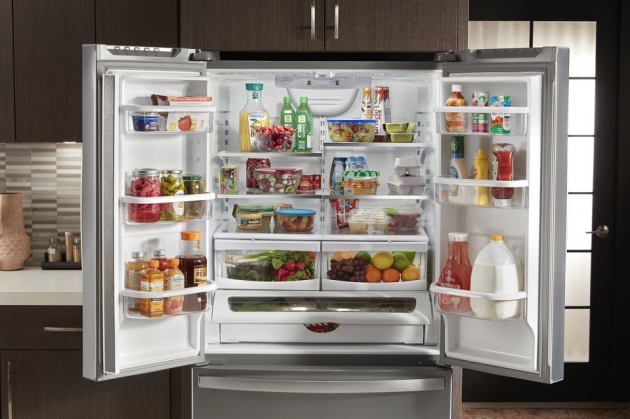Many people place their food in the refrigerator without a second thought. But, there is a wide range of temperature options to consider and coldest isn’t always the best choice. The humidity conditions can have a dramatic effect on the freshness of stored food and when you store the food is important. In this article, we will take a closer look at a variety of foods and some key considerations on how they should be stored in a refrigerator.
Optimal Meat Storage Conditions
Meat needs to be kept colder than other foods and it should always be stored in the coldest part of your refrigerator. When you store red and white meat it should be kept at a temperature close to freezing. This is especially true if you’re storing meat for a longer period of time. Setting part of your refrigerator to 28ºF to 32ºF is ideal for meat storage. Some models have a colder drawer with sub-freezing temperatures for meat storage. High humidity in the 85-90% range is also important for meat storage to keep it fresher for longer and to prevent it from drying out.
Optimal Seafood Storage Conditions
Seafood should be stored at 40ºF or lower to prevent a fast degradation in quality that is inevitable at higher temperatures. Maintaining high humidity is also helpful and you can simulate these conditions if you cover the seafood with a clean and damp cloth. These considerations are especially important if you plan to eat seafood raw.
Optimal Vegetable Storage Conditions
Vegetables should be stored in humid and cold conditions and a crisper drawer is the ideal location in a modern refrigerator. The optimal storage temperature can vary by each vegetable, but 34ºF is a good average for most veggies.
Optimal Cheese Storage Conditions
Cheese cannot be kept too cold, ideally, it should be stored between 40ºF and 52ºF. As a rule, a soft cheese needs higher humidity storage conditions than a hard cheese. But, both cheeses should be stored with a minimum humidity level of 80%. Some modern refrigerators have a convertible drawer with soft freezing functions that can store cheeses at 42ºF.
Optimal Fruit Storage Conditions
If you intend to use fresh fruit on the day of purchase or during the next day, you may want to consider placing the fruit in a bowl on the countertop. But, if you need to store prepared fruit or fruit that you want to store for longer, it’s important to create the right storage conditions.
Fruit needs to be kept in a humid environment with 80-95% relative humidity to prevent drying issues. The temperature should be in the 32ºF to 55ºF range for optimal preservation. These conditions are essential to prevent the growth of bacteria on fruit which is more prevalent than stored meat!
Fruit can be stored at a wider range of temperatures than meat, but freezing must be avoided. A modern refrigerator with variable temperature zones is the best option when you need to store a lot of fruits and vegetables.
Refrigerator Food Storage FAQs
What is the ideal temperature for a refrigerator?
This is hard to answer because most people eat a varied diet and they need to store a wide variety of foods. As a general rule of thumb keep the refrigerator temperatures lower than 40ºF and consider purchasing a model with variable temperature zones. This will give you the ability to make certain areas a little warmer or cooler to store specific types of foods.
Which is the coldest part of the refrigerator?
Heat always rises and this is equally true inside the refrigerator. So, the lower shelves will always be a little colder than the upper shelves.
If you’re considering a new refrigerator, you can explore your options with this online collection of models, or for further help or guidance, speak to a home appliance expert.

